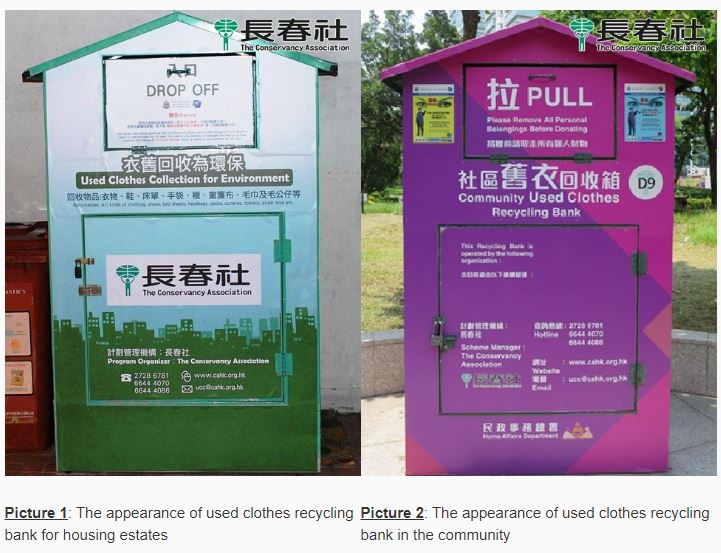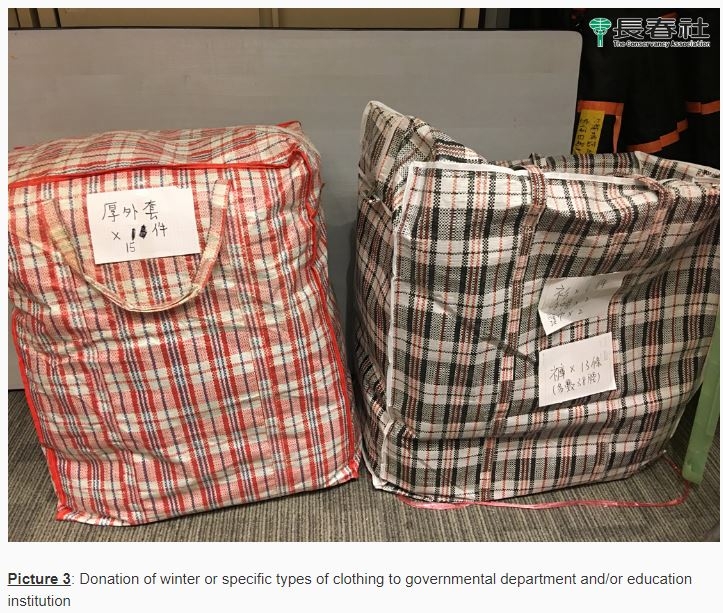Previously, we have mentioned the dilemma faced by used clothes collection (UCC), and for Part 2 we would like to have a deeper sharing on the operation of our recycling works, including where the used clothes go and what are the related environmental educationprograms. The Conservancy Association (CA) attaches great importance to recycling work and we understand that the society might have doubts about the ways recycling industry handled recyclables in the past. The reason for doubts may relate to a lack of transparency. When the public is uncertain where the recyclables go, they may also wonder whether the used clothes are being reused properly. In our opinion, we do not want to see donors felt disappointed in UCC service because of the bygones and unruly behavior of particular recyclers. Therefore, we hope to increase the donors’ confidence on UCC by improving the transparency of the project. In order to maximize convenience and gaining trust from all service users, the name of the organization and/or scheme as well as a 24 hours contact information (see the picture below) are being displayed for all recycling banks set up by CA. Should you have any enquiries regarding used clothes collection or would like to file a recycling bank-overfilling report, you are welcome to contact us so that we could arrange follow-up actions as soon as possible.

In this project, the most important principle is to ensure all recyclables can be properly “reused”. Most of the used clothes collected by CA are exported to Southeast Asian countries (e.g. Cambodia) for reuse purposes, while some of them are donated to the people in need or charities. Furthermore, a site visit was arranged by CA at the beginning of 2018 to investigate the local second-hand clothing industry in Phnom Penh, Cambodia. It was found that the potential of used clothing was promising. Many types of used clothing were spotted and being sold in the local resale market. For more details from our visit to Cambodia, please click here. Some may then wonder whether such “export and reuse” arrangement is equivalent todonating to the people in need in Southeast Asia for free. The vision of CA’s UCC project is to ensureresources could be properly allocated and reused, so we welcome any used clothing request from charities and the needy. We will select and give away desired clothes according to specific needs/purposes for free locally. The majority of remaining used clothes will then be exported to Southeast Asian countries for reuse or resale purposes. CA supports the direction of developing circular economy as this not only reduces additional resource consumption, but also provides project finance in environmental education programs. Hence, we promise that all the proceeds generated from the project will contribute to the development of environmental education programs of CA. As an environmental group, we are not aiming to make profits. However, the project also derives operation costs such as transportation, salaries, export fees and so on. To be honest, we hope the UCC project could operate under a self-financing basis while ensuring all recyclables could be properly reused. Furthermore, we hope to contribute to environmental education by using the project surplus and therefore CA has been striving to maintain a balance between project operation and environmental charity.
Besides, the outbreak of COVID-19 has dealt a severe blow to the world economy with trading restrictions among border circulation. During this period, our UCC services were also suspended for half a year. Although the local recycling industry was experiencing a period of stagnation, it reminded us it was a mere drop in the bucket if we simply rely on UCC and neglect the importance of educating the public on waste reduction. Hence, we explored alternative ways to reuse used clothes locally and will continue to deliver the “Use less, waste less” concept to the public in the long run. In this regard, CA has visited The Hong Kong Research Institute of Textiles and Apparel (HKRITA) in order to know more about the locally developed textile recycling technology, and study the feasibility of long-term cooperation. Furthermore, CA will also donate winter clothes that are not as reusable in Southeast Asian countries to governmental department and/or education institution regularly. We hope resources can be properly used and allocated while increasing the local reuse rate of used clothes.

In the long run, “Waste Not rather than Consume, Reuse rather than Recycle” is one of the focuses of the UCC project. Therefore, education elements such as “Use Clothes Collection for the Environment – Get Fund Scheme” was established for all housing estates under the used clothes collection scheme. The participating estates would earn points by collecting used clothes, which could then redeem eco-tours, various green workshops, eco-drama and/or green prizes, etc. for its residents so as to deliver the message of waste reduction through environmental education program in addition to recycling. CA also committed that all the proceeds generated from the project will contribute to the development of environmental education programs of CA, and we will try hard to achieve the goal of waste reduction at full stretch. Moreover, starting from 2020, CA has regular appearances in Telekids, an educational TV show on OpenTV, to promote environmental education to different age groups. For more information and online programme archive, please visit CA’s official YouTube Channel (https://www.youtube.com/cahk1968).
The reason why we want to tell everyone the actual situation behind recycling work is to allay public concerns thrutransparency. Please feel free to give your comments if there are any deficiencies. They should allow us to have room for improvement, progress, and keep abreast of the timeswhile striving towards the goal of waste reduction.

